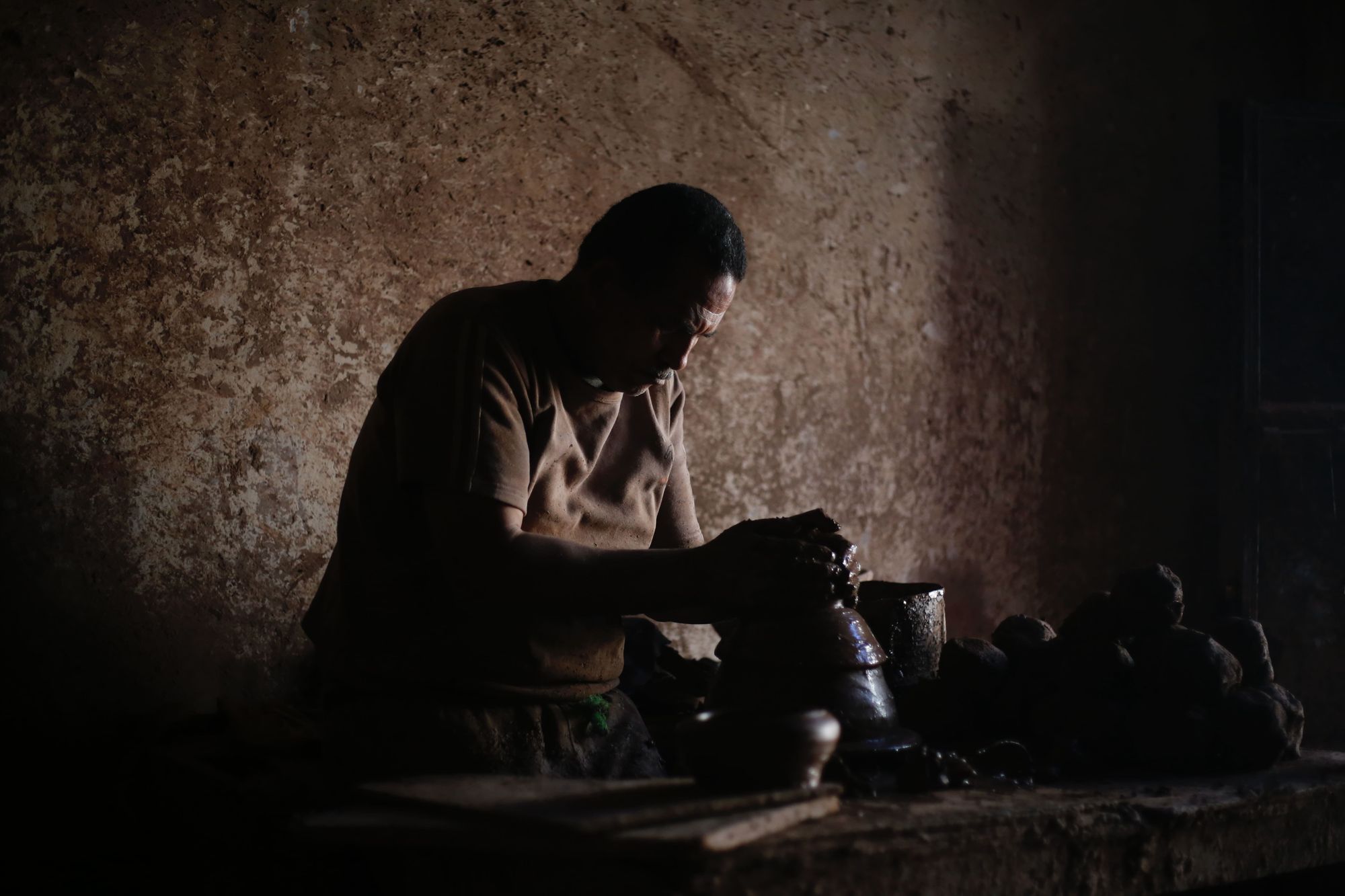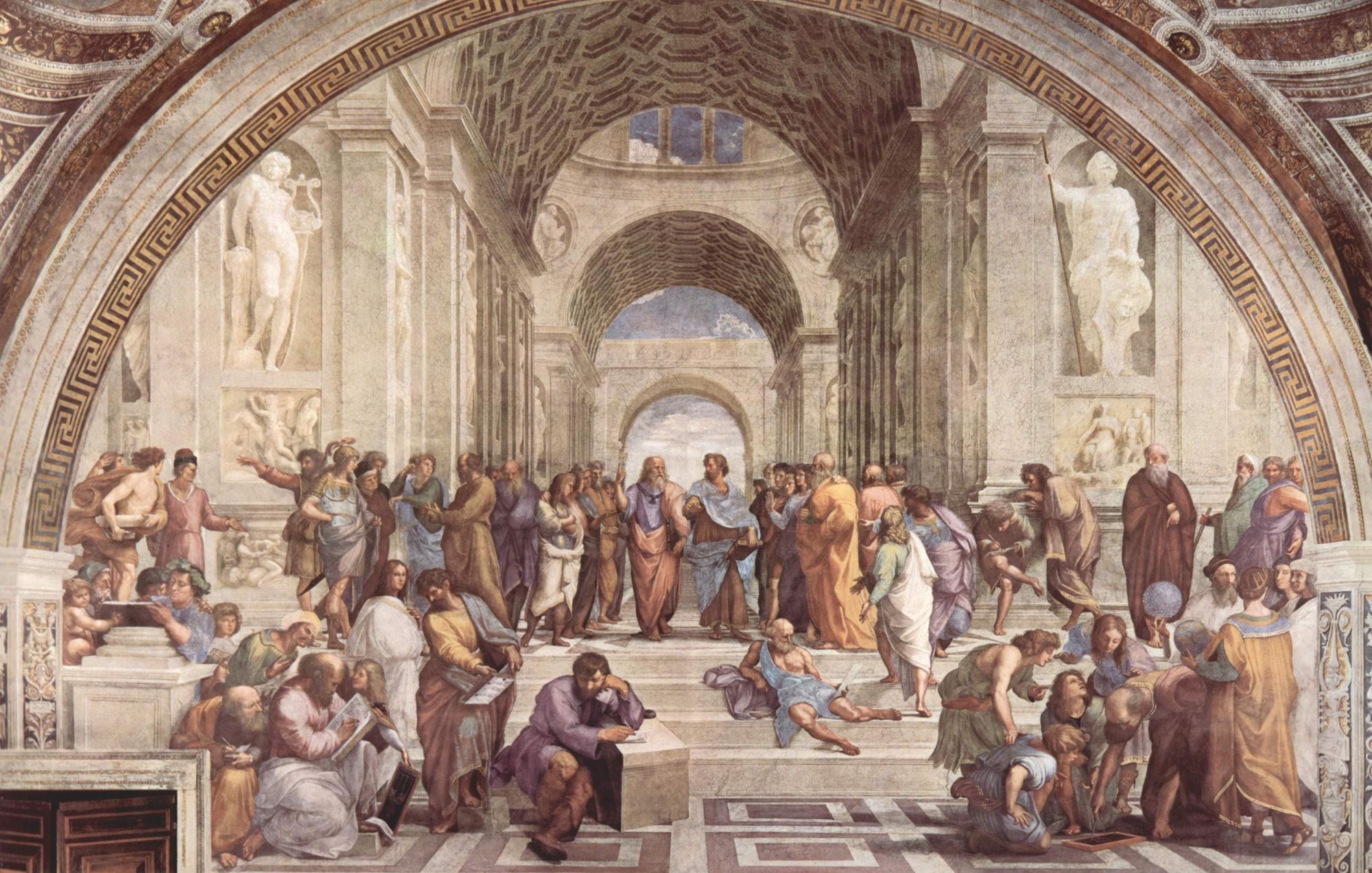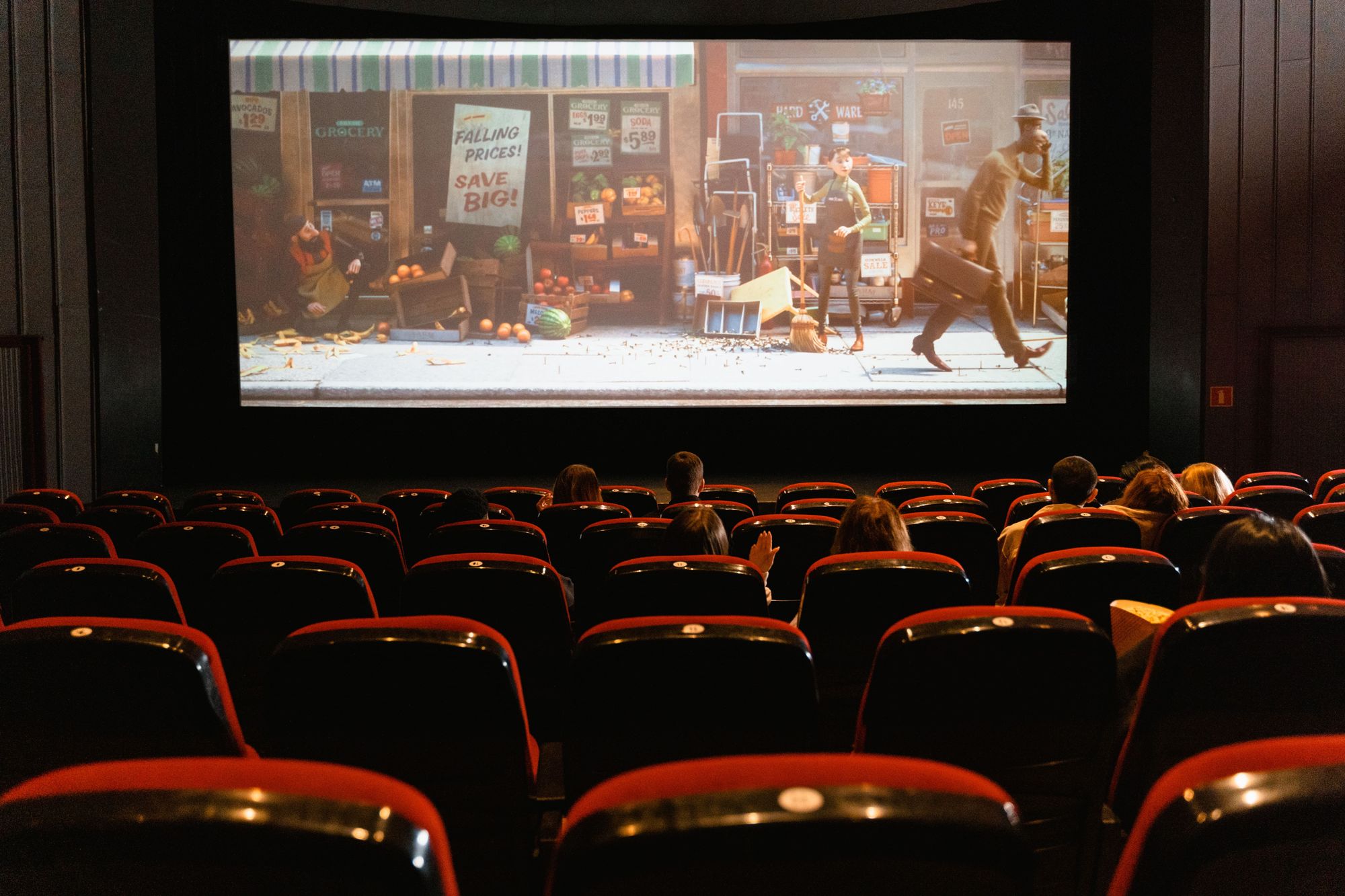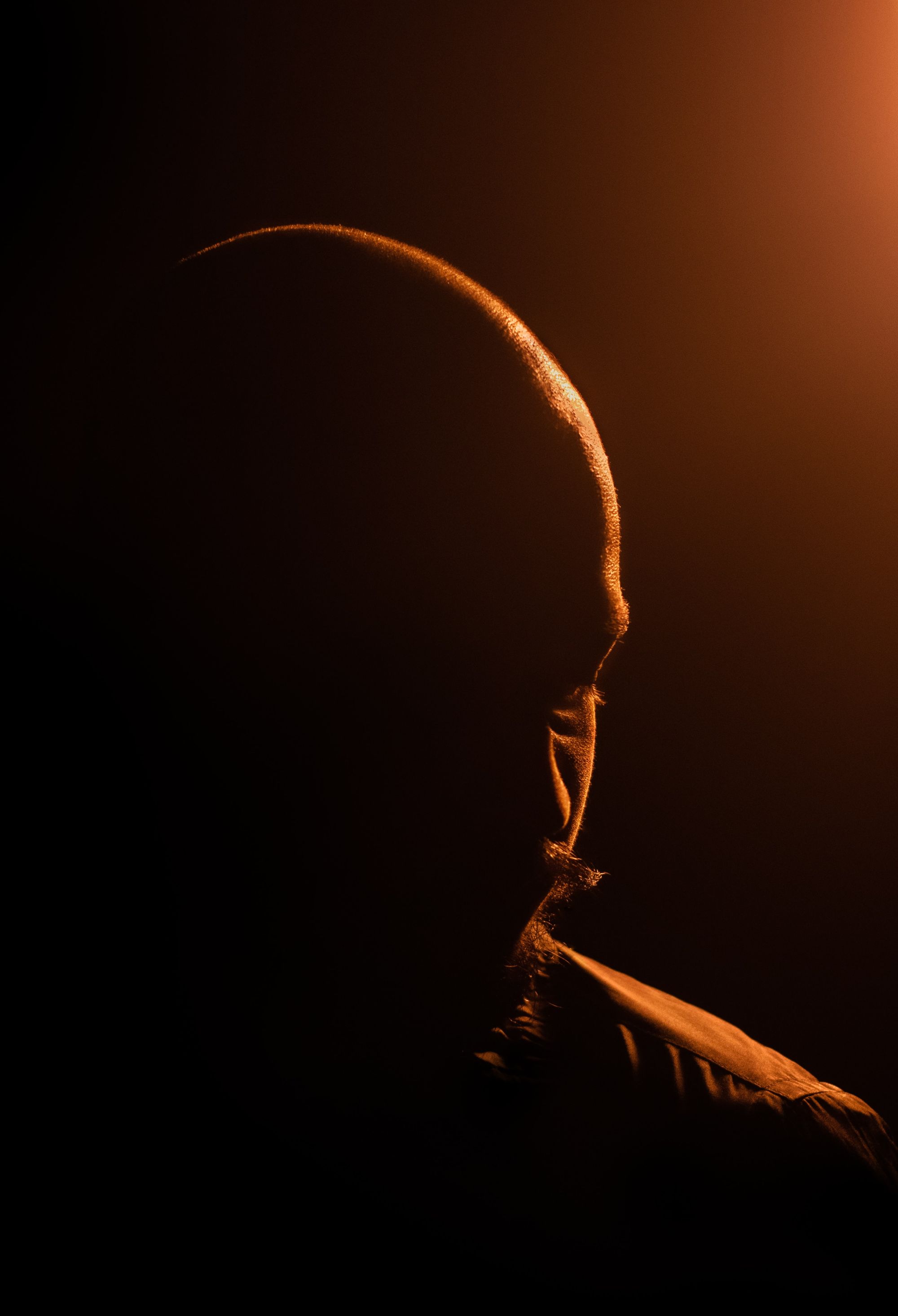Discover the Art of Chiaroscuro Lighting in Filmmaking
Rent film gear from local filmmakers.

Rent film gear from local filmmakers.
For centuries (alright, that might be a stretch), filmmakers have searched and worked on finding the best creative and cinematic lighting techniques.
And not too long ago (a decade or two), the chiaroscuro lighting technique began popping and locking in filmmaking.
Its purpose?
To create a dynamic and effective storytelling effect. So, grab your finest silk doublet and an overabundant bowl of grapes because this ancient lighting technique has found its way to cinema.
Today, we'll be breaking down everything you need to know about the use of chiaroscuro in film.
What is Chiaroscuro?

In a way, the name itself comes with the definition: "Chiaro" means light, and "oscuro" means dark.
So, there you go – easy peasy.
Chiaroscuro lighting refers to light and dark elements in everything from photography, paintings – and, yes, filmmaking.
It's an Italian term (figures) that originates from the Renaissance art movement. It was initially popularized by Leonardo da Vinci's use of it in his paintings.
Chiaroscuro has, since the da Vinci era, found its way to cinema. In filmmaking terms, chiaroscuro refers to low and high-contrast lighting, creating light and dark areas in films. It's used to create a three-dimensional quality in images; fact is, we live in a two-dimensional film world, and the chiaroscuro film lighting technique is a way to combat that.
Chiaroscuro in film is used to create a dramatic, shadowy mood and to build suspense – great for bedtime stories for my little sister; it really brings those monsters in the closet to life.
The origin and history of chiaroscuro

As you might have guessed by now (or read, either or), chiaroscuro has a long history. And although it has found its rightful place in cinema, it didn't start like that. Chiaroscuro emerged during the Renaissance as a painting technique used to create tension between the light and dark elements in portraits and other still life.
If you're familiar with the Renaissance era, you know it was a time of extraordinary creative development (that, and a lot of witchcraft), particularly in the painting community. The dimensionality afforded by high-contrast lighting is one of the period's hallmarks and a direct stylistic choice from the flat compositions of the Middle Ages.
Painters like Caravaggio, Leonardo da Vinci, and Rembrandt embraced the unique lighting technique, and as a result, it quickly became the go-to lighting technique to use in paintings. During the Renaissance period, artists all around Europe adopted the chiaroscuro style. And consequently, chiaroscuro is now known as a subset art movement of the Renaissance period.
Chiaroscuro lighting's start in film
As a film lighting technique, chiaroscuro grew in popularity during the early twentieth century, where it was diligently used in Film Noirs and German Expressionism films.
So, long after Caravaggio and co. invented the stylistic lighting, it remains an essential part of visual art and continuously remains an integral part of cinema.

Take Orson Welles's paragon Citizen Kane, for example. Citizen Kane pioneered several cinematic techniques in Hollywood.
One of those techniques?
Chiaroscuro in film.
Sure enough, we had seen the mix of light and shadow before, but not like this. We had seen the profound depth of field before, but not like this.
The use of chiaroscuro in film also became prominent in Francis Coppola's magnum opus The Godfather. A somewhat well-known film. And I'm not going to say it was due to the lighting… but wasn't it, though?
The Godfather movies are famous for their dark lighting, often only lighting half of a character's face, generating immense suspense to the action on-screen. What you see there… that's the work of chiaroscuro film lighting.
It didn't take long from there before chiaroscuro lighting made its way into the Film Noir genre and chiaroscuro in film became ingrained in our film psyche.
You can see chiaroscuro doing its thing in something as recent as in the Bond, James Bond movie; Casino Royal, and its now-iconic opening scene. Take a look at the scene, look at how powerful it is, and get a sense of what chiaroscuro can do for your film. And then after that, do yourself a favour and finish the movie (lighting isn't the only great thing about that film).
How chiaroscuro lighting affect a film's look

Merely the definition of chiaroscuro in film gives you a sense of what the lighting technique will bring to your footage. Hear me out:
A lighting technique that uses a low-key lighting setup, with a key light as the sole light source – achieving dark background with starkly lit subjects…?
I mean, if that doesn't give you the need to try it out, I don't know what does.
The chiaroscuro technique makes your films look more dramatic, adding more dimension to what you see on-screen. The method creates an opposing balance of light and dark to ensure your characters, objects and settings don't look flat.
Using chiaroscuro in film will give your subjects a sense of volume and an appearance of depth, adding mystery and tons of dramatic effects (think Austin Powers in Black Hawk Down – that'll need some proper dramatic lighting to make it realistic).
3 Tips on how to use chiaroscuro in film
So, now you know a little more about chiaroscuro lighting and what it'll do to your film.
Are you feeling inspired yet?
If the thought of adding a 3D look, volume, mystery, suspense, dramatic effects... doesn't make you go cuckoo bananas, then what I'm about to tell you might not be of interest to you.
If it does… let's continue breaking down some top tips for how you can achieve the chiaroscuro effect in filmmaking.
Here are three quick tips on how you get started using chiaroscuro in film:

1. Know your film lighting techniques
In all its simplicity, chiaroscuro lighting is the juxtaposition between light and dark to create a sense of depth and volume to your shot – it's a dramatic effect tool.
To know how to position your lighting to create this, you need to know the different film lighting setups and the cinematic techniques you can apply to your movie.
First step; become familiar with a key light, fill light and backlight. And whenever you're in doubt – watch some of the chiaroscuro professionals do their thing, learn from them, and copy until you can do it yourself.
2. Get the proper lighting equipment
Once you know the film lighting basics, it's time to gear up. You'll need a camera, a proper lens and some kick-ass lighting equipment.
To help you out on what type of lighting equipment you should consider, check out our ultimate guide on the various camera gear for beginners before settling on anything.
3. Practice makes perfect
Not surprisingly, the more you do something, the better you get doing it (unless you have a severe case of Memento).
So, when getting started with the unique chiaroscuro film lighting technique, it's a game of trial and error. It might help if you begin by lighting the background separately to create that 3D look. And then experiment with the angle of your light onto the subject – the purpose is to create a mysterious and high-contrast look, make sure you do that.
Learn all the types of film light
Chiaroscuro has been around for a while, and there's a reason for that – it works!
However, it's far from the only cinematic lighting technique out there, and the fact is – lighting is tricky. In a nutshell – cinematography is like painting with light, and we can't all be a Claude Monet or Van Gogh.
We must all start somewhere. Learn all the film lighting basics, so you can get to paint your own "Starry Night", soon enough.
Chiaroscuro in film FAQ
What is chiaroscuro lighting?
Chiaroscuro is a high-contrast lighting technique that uses a key light to achieve dark backgrounds with starkly lit subjects.
Why should I use side lighting?
Chiaroscuro in film will create depth and works as a dramatic tool. When deployed with purpose, chiaroscuro conveys a heightened atmosphere and a mysterious command of mood.
How to achieve the chiaroscuro lighting?
You can achieve chiaroscuro lighting in many different ways.
One "easy" way to start is lighting half of someone's face and letting the other half fall off into the darkness. That'll get you started with your first step – a lot of chiaroscuro technique is about experimenting until you get the right mood.























